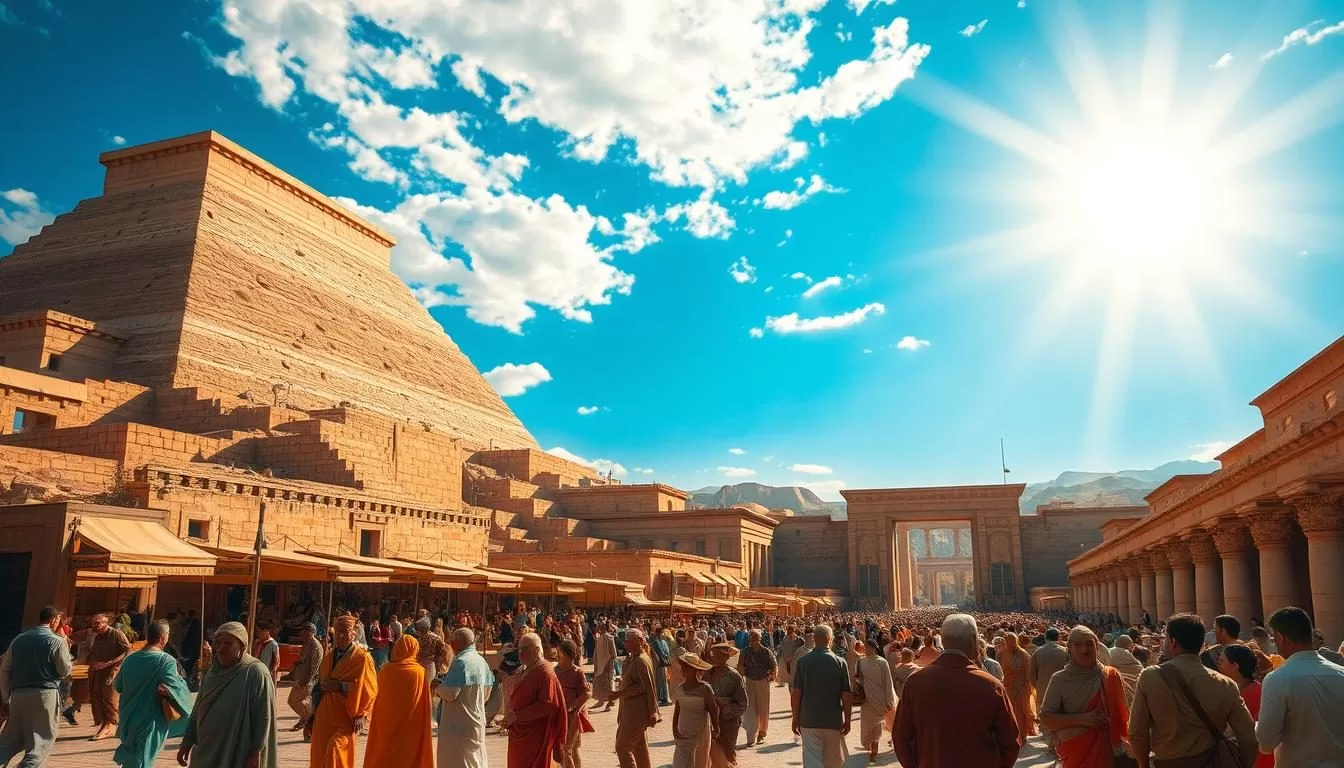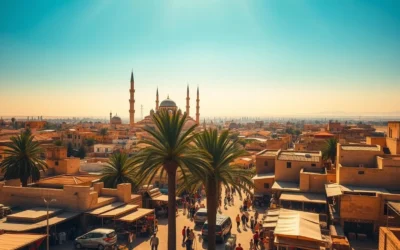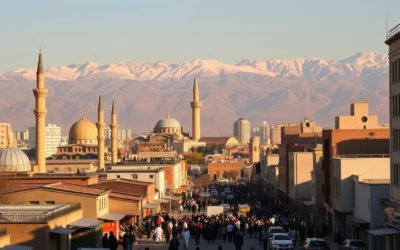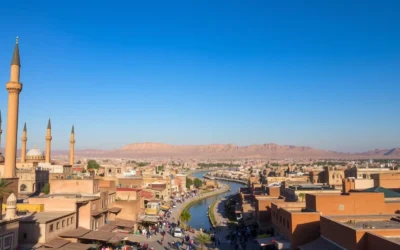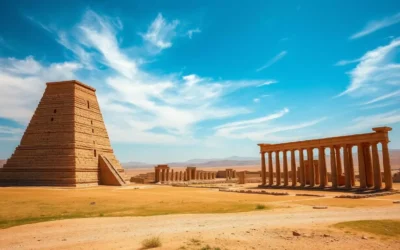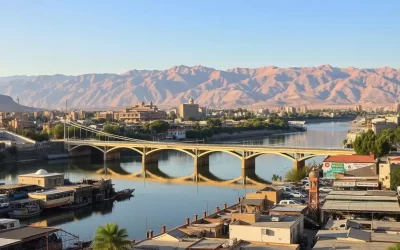✓ Accommodations✓ Flights✓ Rental Cars
Step into a world where history comes alive. This city, known for its rich cultural heritage, offers a journey through time. From towering landmarks to hidden gems, every corner tells a story. Ancient Babylon stands as a testament to human ingenuity and creativity.
Planning your trip? This guide provides detailed insights into must-see sites and practical travel tips. Whether you’re a history buff or a curious traveler, you’ll find something to captivate your interest. The city’s global significance makes it a unique destination for explorers.
Today, this ancient city continues to inspire awe. Its legacy spans thousands of years, offering a glimpse into the past. Ready to embark on an unforgettable adventure? Let’s dive into the wonders of this historic place.
Introduction: Discover Babylon’s Timeless Charm
Uncover the layers of an ancient city that has shaped civilizations for millennia. This place is more than just a destination; it’s a journey through time, where every stone tells a story. From its rise as a cultural hub to its recognition as a world heritage site, this city continues to captivate visitors.
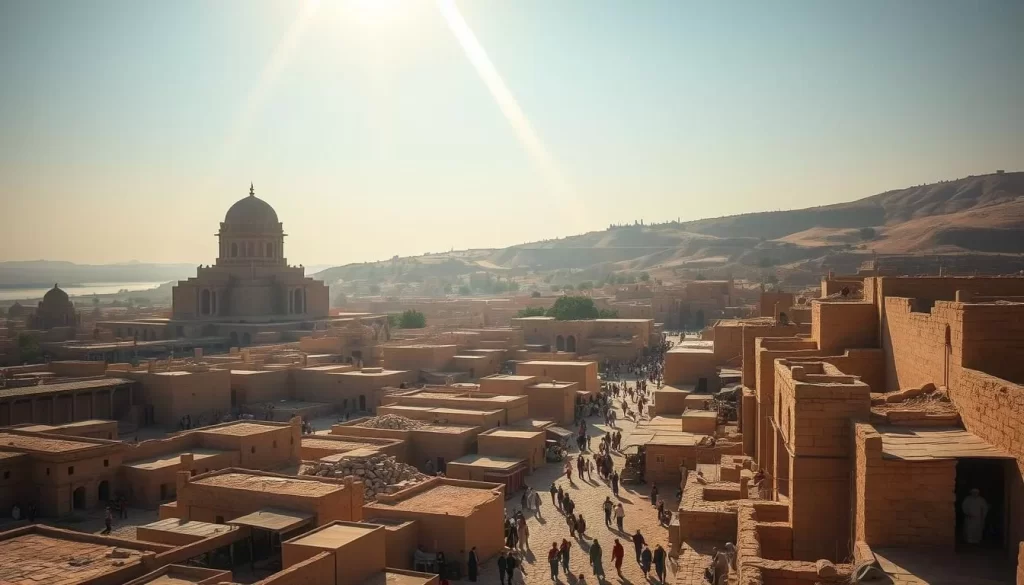
Ancient History & Cultural Significance
This ancient city was once the heart of a powerful empire. Its influence extended far beyond its borders, shaping art, science, and governance. The legacy of its rulers and thinkers still resonates today. Key structures, like the iconic Ishtar Gate, stand as testaments to its grandeur.
Modern scholars continue to study its contributions to human history. The city’s archives, though partially lost, offer glimpses into its intellectual achievements. The destruction of the House of Wisdom in Baghdad by the Mongols in 1258 resulted in the loss of countless philosophical and scientific texts, contributing to a long decline in Iraqi intellectualism.
Location & Modern Access
Located in a region rich with history, this ancient city is now accessible to travelers from around the world. Getting here is easier than ever, with options like taxi services and guided tours. These modern conveniences make it simple to explore its wonders.
Understanding its location helps you appreciate its historical context. The city’s strategic position made it a crossroads of cultures and trade routes. Today, it remains a symbol of resilience and continuity.
- Plan your visit with a reliable guide to make the most of your trip.
- Use local transportation like taxis for convenience.
- Explore its landmarks to connect with its rich history.
Babylon, Iraq: Best Things to Do – Top Picks
Explore a destination where ancient wonders meet modern exploration. This historic site offers a mix of ruins, reconstructions, and cultural landmarks that tell the story of a civilization that once ruled the world. Each part of this location contributes to an unforgettable trip.
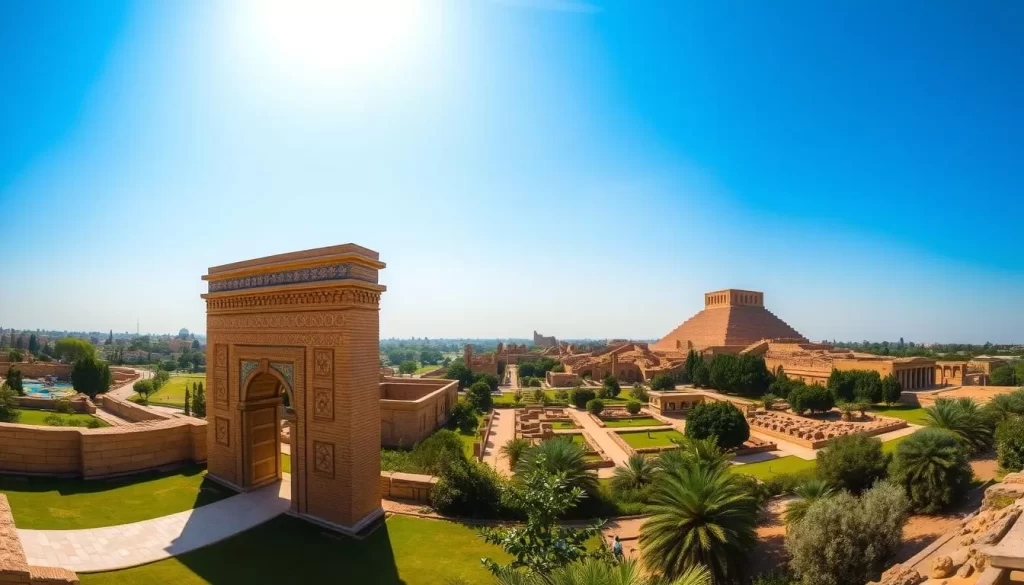
One of the key highlights is the Ishtar Gate, a stunning example of ancient craftsmanship. Its intricate designs and vibrant colors transport you back in time. Another must-see is the Lion of Babylon, a symbol of strength and resilience that has stood for over 2,600 years.
Modern reconstructions, like the amphitheater, offer a glimpse into how this city once thrived. These landmarks, combined with the UNESCO World Heritage status achieved in 2019, make it a tourist magnet.
Whether you’re wandering through the ruins or marveling at the preserved structures, every corner of this site invites discovery. Plan your visit to experience the magic of this ancient city and create memories that will last a lifetime.
Must-See Ancient Landmarks
Step back in time and witness the grandeur of ancient craftsmanship. This historic site is home to iconic structures that have stood the test of time. Each landmark tells a story of a civilization that once dominated the world. Prepare to be amazed by the artistry and symbolism that define these treasures.
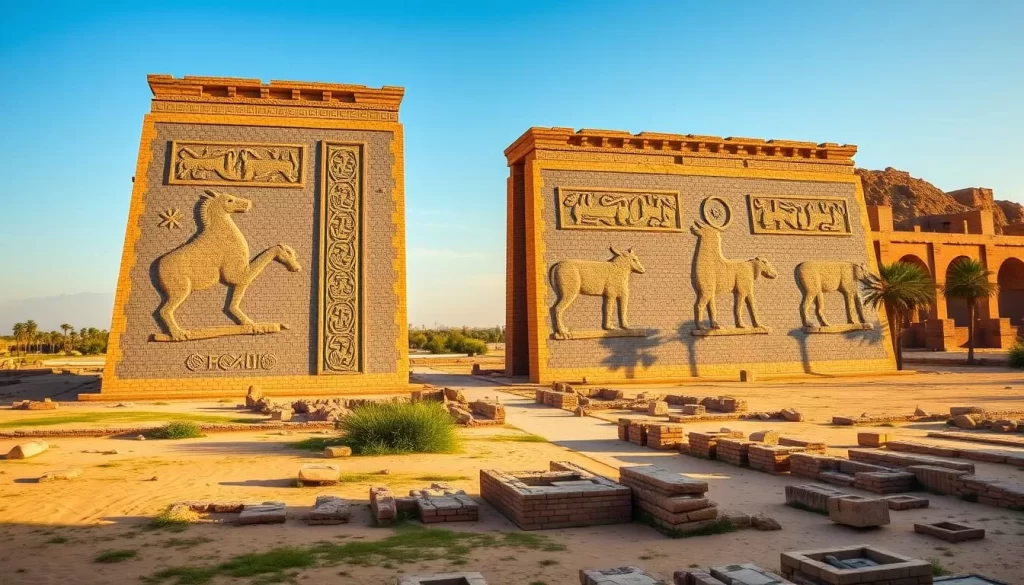
Exploring the Ishtar Gate Complex
The Ishtar Gate is a masterpiece of ancient engineering. Built around 575 BC, it features blue-glazed bricks and intricate reliefs depicting dragons and bulls. These designs symbolize the deities of the time, offering a glimpse into the spiritual beliefs of the era.
For photographers, the gate is a dream subject. Visit during golden hour to capture its intricate details bathed in soft, warm light. The gate’s reconstruction showcases the dedication to preserving this cultural treasure.
Marvel at the Lion of Babylon
The Lion of Babylon is a powerful symbol of strength and resilience. This statue, dating back 2,600 years, stands as a testament to the might of the ancient civilization. Its enduring presence continues to inspire awe among visitors.
As you explore, take a moment to appreciate the artistry behind this iconic figure. The lion’s craftsmanship reflects the skill and creativity of its creators. It’s a must-see for anyone interested in ancient history and symbolism.
- Learn about the gate’s blue-glazed bricks and their significance.
- Discover the symbolism behind the Lion of Babylon.
- Capture the perfect photo of these landmarks during golden hour.
Exploring Babylon’s Architectural Marvels
Dive into the architectural brilliance of an ancient civilization that continues to inspire awe. The city’s layout and design reflect a level of sophistication that was ahead of its time. From its defensive walls to its intricate streets, every element tells a story of innovation and grandeur.
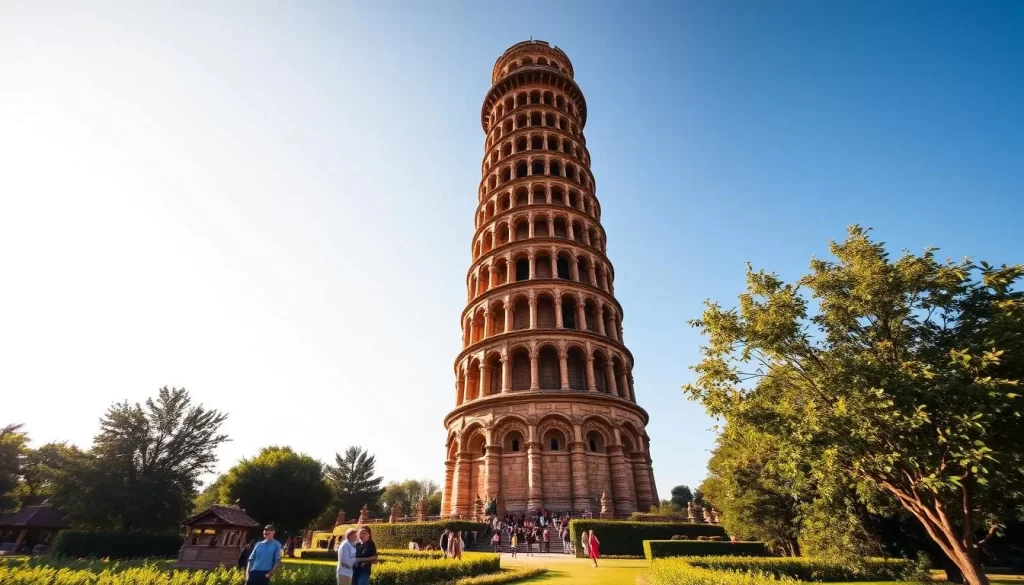
City Layout & Urban Planning
The city’s urban planning was a marvel of its era. Its streets were laid out in a grid pattern, ensuring efficient movement and organization. The defensive walls, some of which still stand today, were designed to protect the city from invaders.
Archaeological studies reveal that the buildings were constructed with precision and care. The use of advanced engineering techniques allowed for structures that have endured for millennia. These ruins offer a glimpse into the ingenuity of the ancient architects.
The Tower of Babel Site Revisited
The Tower of Babel remains one of the most iconic sites in history. Though its exact location is debated, its mythological and historical significance is undeniable. The tower symbolizes humanity’s ambition and the divine response that followed.
Modern restoration efforts have brought new life to this ancient site. Archaeologists continue to uncover artifacts that shed light on its construction and purpose. These discoveries highlight the interplay between ancient ruins and contemporary preservation.
- Explore the grid-like streets and defensive walls that defined the city’s layout.
- Learn about the engineering techniques used in ancient buildings.
- Discover the ongoing archaeological work at the Tower of Babel site.
Saddam Hussein’s Palace and Modern Intrigues
Discover a unique blend of modern and ancient history at Saddam Hussein’s Palace. This imposing structure stands as a stark contrast to the ancient ruins nearby, sparking debates about its place in a site of such historical significance. Built as a summer retreat, the palace’s grandeur and controversial location make it a fascinating part of your visit.
Historical Legacy of the Palace
Saddam Hussein’s Palace was constructed during his regime, symbolizing his power and ambition. Its placement near the ancient ruins of Babylon has been a point of contention, as it disrupts the historical landscape. The palace’s design reflects modern architectural trends, creating a stark juxtaposition with the ancient structures it overlooks.
Despite its controversial origins, the palace has become a part of the site’s layered history. It serves as a reminder of the region’s complex past, where modern interventions intersect with ancient heritage. Visitors often find themselves reflecting on the interplay between these two eras.
Contemporary Controversies
The palace’s presence has sparked ongoing debates, particularly in relation to its impact on the site’s UNESCO World Heritage status. Critics argue that its construction damaged the integrity of the ancient ruins, while others see it as a modern artifact worth preserving.
Efforts to balance preservation with modern development continue to be a challenge. The palace has become a focal point in discussions about how to protect ancient sites while acknowledging more recent history. Its future remains uncertain, as stakeholders weigh its cultural and historical value.
- Explore the palace’s architecture and its contrast with ancient ruins.
- Learn about the debates surrounding its impact on the UNESCO World Heritage site.
- Reflect on the complex relationship between modern and ancient history.
Practical Travel Tips for Visiting Babylon
Make your journey to this historic site seamless with these practical tips. Whether you’re planning a day trip or a longer tour, these insights will help you navigate the experience with ease. From transport options to safety considerations, we’ve got you covered.
Navigating Transport and Entrance Fees
Getting to the site is straightforward, with several options available. Shared taxis are a popular choice, costing around 10,000 IQD (approximately $7) per person. For more convenience, private taxis are negotiable and offer door-to-door service.
Entrance fees are currently 25,000 IQD (approximately $20), giving you access to the iconic ruins and landmarks. Plan your visit during the mild months from November to March for the best weather.
| Transport Option | Cost | Details |
|---|---|---|
| Shared Taxi | 10,000 IQD | Per person, ideal for budget travelers |
| Private Taxi | Negotiable | Door-to-door service, more convenient |
| Entrance Fee | 25,000 IQD | Access to all major sites |
What to Pack and Safety Considerations
Packing smart ensures a comfortable travel experience. Bring lightweight clothing for warm days and a jacket for cooler evenings. Comfortable walking shoes are a must, as you’ll be exploring ruins and uneven terrain.
Safety is key. Stay hydrated, especially during summer when temperatures can exceed 40°C (104°F). Respect local customs by dressing modestly and avoiding sensitive topics in conversations.
- Pack sunscreen, a hat, and sunglasses for sun protection.
- Carry a reusable water bottle to stay hydrated.
- Keep a small first-aid kit for minor emergencies.
For more insights into the preservation efforts at this historic site, check out this detailed article.
Experiencing Local Culture and Hospitality
Experience the warmth and authenticity of a community deeply rooted in tradition. The local people in this region are known for their welcoming nature, making every visitor feel at home. From sharing meals to engaging in heartfelt conversations, the way they connect with others is truly special.
One of the best ways to immerse yourself in the culture is by interacting with local guides. These knowledgeable individuals can provide personal insights into the area’s history and traditions. For example, many families return to visit this region after their first trip, drawn by the genuine connections they’ve made.
Interacting with Locals and Authentic Experiences
Engaging with the local community offers a unique perspective on their way of life. Whether it’s sharing a traditional meal or participating in cultural customs, these experiences create lasting memories. The personal stories shared by residents often reveal the deep connection they have to their heritage.
Respect is key when interacting with people from this country. Understanding cultural nuances, such as dressing modestly and avoiding sensitive topics, ensures a positive exchange. Many visitors find that these respectful interactions lead to meaningful connections and a deeper appreciation for the area’s traditions.
- Engage with local guides to gain insights into the culture.
- Participate in traditional activities, like sharing meals or learning crafts.
- Respect cultural norms to foster positive interactions with locals.
For a deeper dive into the region’s cultural richness, consider joining a cultural tour that highlights authentic experiences. Alternatively, explore the immersive Babylon & Beyond tour, which connects you with the heart of this vibrant culture.
Photography, Preservation, and Insider Tips
Capture the essence of an ancient world through your lens. This historic site offers countless opportunities to create stunning visuals. From iconic landmarks to serene green spaces, every corner is a photo waiting to happen. Whether you’re a professional or an amateur, these tips will help you make the most of your visit.
Best Photographic Opportunities
The hanging gardens are a must-see for any photographer. Their lush greenery and intricate designs provide a perfect backdrop for your shots. Visit during golden hour to capture the soft, warm light that enhances the beauty of these ancient gardens.
Don’t miss the iconic landmarks like the Ishtar Gate and the Lion of Babylon. These structures are rich in detail and symbolism, making them ideal subjects for your photos. Experiment with different angles to highlight their unique features.
For a different perspective, head to the nearby river. The water reflects the ancient ruins, creating a mesmerizing effect. Use a polarizing filter to reduce glare and bring out the vibrant colors of the landscape.
Preservation Efforts and Visitor Etiquette
While capturing the beauty of this historic site, it’s important to respect its preservation. Avoid touching or climbing on delicate ruins. Use a tripod to stabilize your camera without disturbing the surroundings.
Follow the guidelines provided by local authorities. These rules are in place to protect the site for future generations. For example, drones are often prohibited to prevent damage to ancient structures.
Learn more about the ongoing preservation efforts by visiting this detailed guide. It offers insights into how you can contribute to protecting this cultural treasure.
- Capture the hanging gardens during golden hour for the best lighting.
- Experiment with angles to highlight the details of iconic landmarks.
- Respect preservation guidelines to protect the site for future visitors.
Conclusion
Immerse yourself in the timeless allure of a world heritage site that bridges the past and present. This ancient city stands as a testament to human ingenuity, offering a glimpse into a place where history and culture intertwine. From the iconic Ishtar Gate to the enduring Lion of Babylon, each landmark tells a story of resilience and wonder.
Your journey through this site will leave you with a deeper appreciation for its rich legacy. Practical tips, like visiting during mild months and engaging with local guides, ensure a seamless experience. The city’s vibrant life today reflects its enduring significance, connecting the past to the present.
Ready to explore this wonder for yourself? Revisit this guide for updated insights and share your own experiences. The ancient city awaits, ready to inspire your next adventure. Learn more about its preservation efforts as a UNESCO World Heritage Site and uncover the secrets of the Ishtar Gate.
The above is subject to change.
Check back often to TRAVEL.COM for the latest travel tips and deals.
